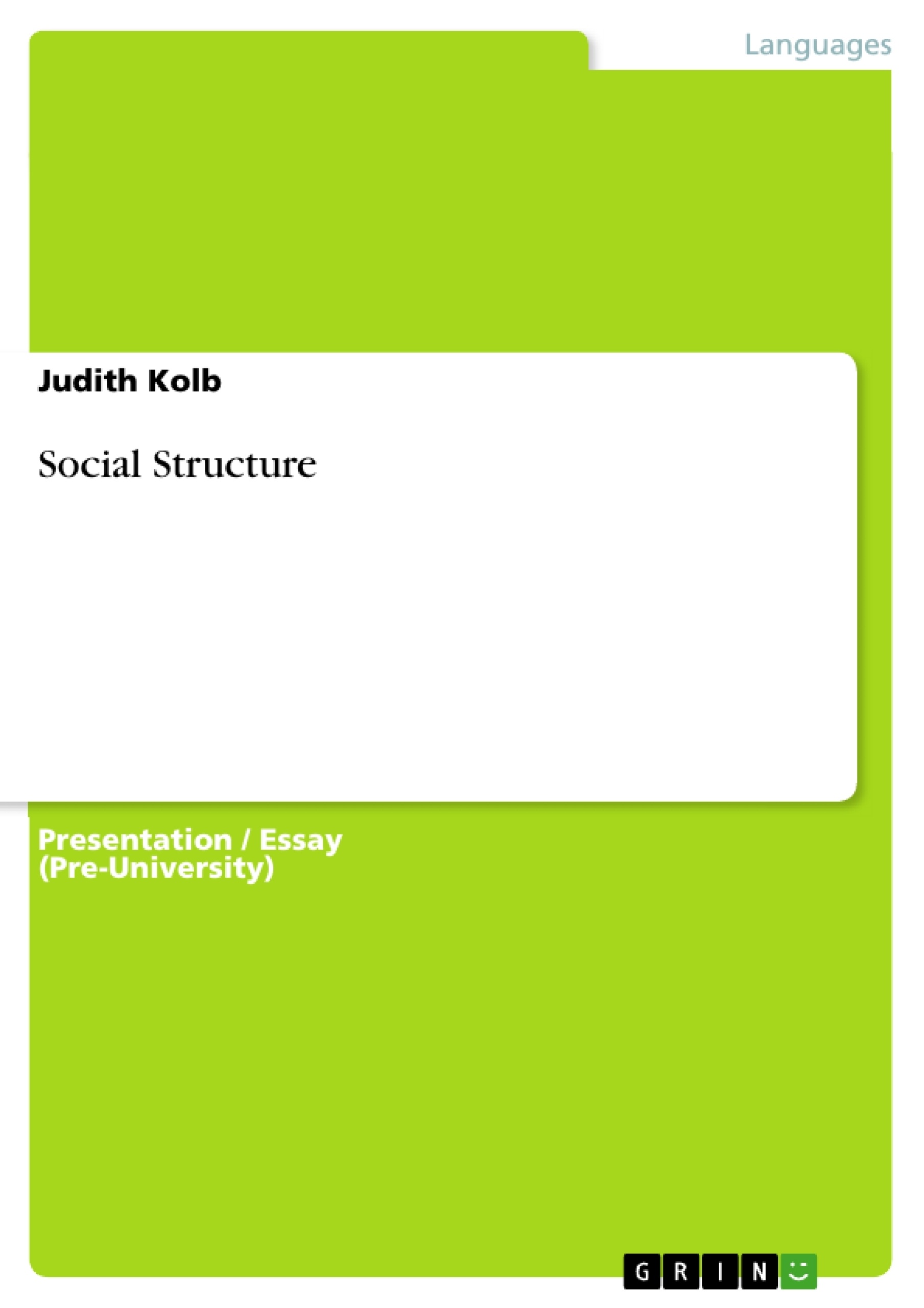Social Structure
1.) Equality
In the economic sense, American equality means equality of opportunity.
The conception of each person's freedom and responsibility for himself is at the centre of the idea of 'The American way of life'. By now this idea is partly mythical.
a) Money
There is plenty of inequality of income and possessions, but the community as a whole is much richer than others, because there has been high investment in industry and agriculture and because there is a high level of skills. Additionally there were vast natural resources of the country, which enabled the Americans to provide themselves with a real material living standard.
How is the wealth distributed?
- five-sixths of all Americans live in conditions of comfort and affluence
- one-sixth are poor enough to feel that they have been left behind and excluded from the great society
- over two-thirds of all families have incomes of more than $ 5000 a year, half are above $ 7000, a quarter above $ 10000
b) Education
- People who earn more money, nowadays include a large proportion who have had longer periods of education, so cultural differences are added to economic differences
- The big firms need people with skills that must be built on educational qualifications
- Today, nearly all big businessmen are college graduates
c) Family background
- Many graduates of one of the private universities with high prestige have only been able to study there, because their parents had enough money to pay for them
- Family influence can be very helpful towards getting a job which can lead to a substantial career. Of the big businesspersons, there gained about one-tenth their positions through direct family succession, half are sons of businesspersons and a quarter are sons of professional people as doctors and lawyers. Only one-tenth are sons of manual workers.
d) Colour barrier
There are also some large groups that suffer serious disadvantages in the competition for status and prestige.
- Negroes who have no special education or skills are divided by a wide gulf from the white professional and technical middle class
- Some Negroes have substantial wealth, the same style of living as white people in similar positions, but for most of them there is little spontaneous and relaxed social contact with white people
We can easily point to inequalities, social and economic, but there is still a deepseated belief that, no matter what his wealth or job, each person is fundamentally equal with every other.
2.) Poverty
Poverty is the lack of means to obtain an amount of food, a standard of living accommodation and other goods that seem adequate to a particular society. Causes:
- Old age
- Unsuccessful private enterprise
- A Large family combined with low income
- Unemployment over a long time
It is partly the high general standard that concentrates attention on the poverty and it is possible to produce statistics which suggest that some material things which are commonly regarded as luxuries are within reach of nearly everyone. Among very poor households half are car owners - but some car owners do not have enough to eat!
3.) Maladjustment
The fear of crime in big cities has been a factor which has encouraged many people to move outwards to less troubled areas.
- In relation to the state population, murders have been twice as common in some of southern states, e.g. Illinois
- The most law-abiding parts are on the whole in the farming mid-west and mountain states from Iowa to Idaho
Crime is partly a result of bad material conditions: it is most prevailing among
people whose lives are unsatisfactory ( people without a settled home,...)
But there are also the contemporary values which television, film and literature
show everyone everyday: So physical strength, good looks, ability and readiness to push other people out of the way are qualities which are praised.
- The psychiatrist has become one of the most sought-after advisers
- The number of people who need a way out of their personal problems and pressure grows and so does the number of people who turn to drugs.
4.) Women
- Early American society kept women in a domestic role and there was less scope for female influence.
- Girls' schools developed soon and by the 1860's women were active and influential in the campaign against slavery
- 1920 Women won the right to vote by the constitutional amendment
- Since 1970 new laws have been passed to forbid every kind of discrimination on the ground of sex
- Today, equal pay is required in principle
Vocabulary
Abbildung in dieser Leseprobe nicht enthalten
source of information: Peter Bromhead, Life in modern Britain (edition 1981)
K12, 22.05.2000
Benewitz
13 Punkte
- Citation du texte
- Judith Kolb (Auteur), 2000, Social Structure, Munich, GRIN Verlag, https://www.grin.com/document/100909




